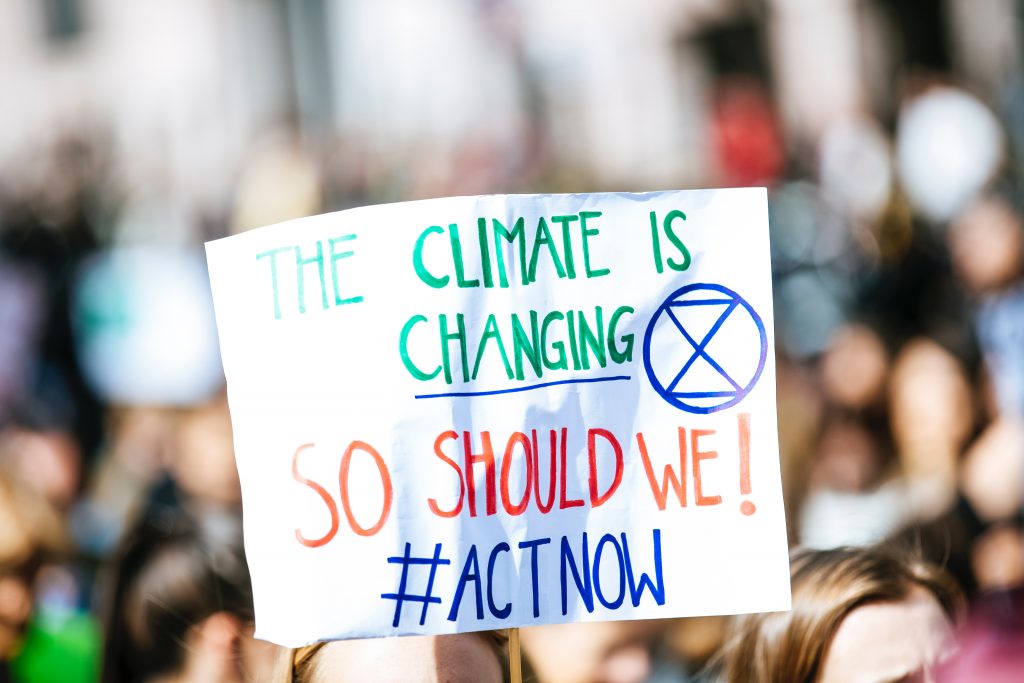New Climate Reports to read before COP27
Source: Karolina Eklöw
The Conference of Parties is the largest and most important climate meeting that takes place each year. But before the COP27 is convened, let’s have a look at the other reports that have been published in the past year.

1. Emissions Gap Report by UN Environment Programme
The report demonstrates that we are far from the Paris Agreement target of limiting global warming to far below 2°C, preferable 1.5°C, and that revised national promises made after COP26 have little impact on expected 2030 emissions.
By the end of the century, policies now in place predict a 2.8°C temperature rise. By the end of the century, the temperature will only climb by 2.4–2.6°C depending on whether the existing promises are conditional or unconditional.
2. Synthesis 2022 by UN Climate Change (UNFCCC)
In spite of the fact that this new UN Climate Change report demonstrates how nations are bending the global greenhouse gas emissions curve downward, it also emphasises that these efforts are still insufficient to keep the increase in global temperature to 1.5 degrees Celsius by the end of the century.
The analysis claims that the cumulative climate commitments made by the 193 Parties to the Paris Agreement may put the globe on track to experience global warming of about 2.5 degrees Celsius by the end of the century.
3. Navigating Energy Transitions: Mapping the road to 1.5°C by International Institute for Sustainable Development
The paper provides guidance to businesses, investors, and politicians on how to make decisions that are consistent with the Paris Agreement’s aspirational 1.5C objective. It is founded on a thorough analysis of “pathways” that keep global warming to 1.5C, produced using integrated assessment models (IAMs).
The paper makes clear the effects on investments in fossil fuels. In terms of addressing climate change, this goes beyond the most recent Intergovernmental Panel on Climate Change (IPCC) report.
4. State of NDCs by World Resources Institute
This paper assesses our current situation and provides a full overview of the newest NDCs’ substance, including their mitigation objectives, adaptation components, sector-specific actions, and necessary finance. It seeks to act as a resource on NDC content, to feed the Global Stocktake and the Glasgow work programmes on mitigation ambition and adaptation, and to guide the development of successive NDCs.
It summarises key findings from the World Resources Institute’s Climate Watch platform and other data sources and poses issues arising from these data for debate among policymakers, funders, civil society organisations, and researchers.
5. State of Climate Action by Climate Action Tracker, NewClimate Institute & ClimateWorks Foundation
By accelerating systemic changes in power, buildings, industry, transport, forestry and land use, food and agriculture, as well as the immediate scale-up of carbon dioxide removal technologies and climate finance, this report gives an overview of how we are doing as a society in addressing the climate crisis. It evaluates the development of 40 systems change indicators and concludes that none are on pace to meet their goals by 2030.
6. Countdown by The Lancet Countdown on Health and Climate Change
The study for this year is being released as nations and health systems struggle with the health, social, and economic effects of climate change, which have now exacerbated the effects of the global energy crisis and the ongoing COVID-19 epidemic.
The 2022 Report, examines the connection between health and climate change using 43 indicators and five important categories, shows that the world is at a turning point.
7. Greenhouse Gas Bulletin by World Meteorological Organization
The WMO Bulletin is the official journal of the World Meteorological Organization. The Bulletin was first published in 1952 and is produced in English, French, Russian and Spanish.
This issue of the WMO Bulletin as a complement to the theme of “World Meteorological Day Early Warning and Early Action Hydrometeorological and Climate Information for Disaster Risk Reduction”
8. World Energy Outlook by International Energy Agency (IEA)
This year’s WEO investigates important concerns about the crisis based on the most recent energy statistics and market developments: Will it constitute a setback for the transition to sustainable energy or a motivator for more action? What impact may government actions have on the energy market? Which dangers to energy security exist on the way to net zero emissions?
The WEO is the most reliable source of analysis and predictions in the energy sector. Since 1998, this IEA flagship publication has been released annually. Its impartial research and objective statistics offer crucial insights into the world’s energy demand and supply under various scenarios, as well as the consequences for energy security, climatic goals, and economic growth.


